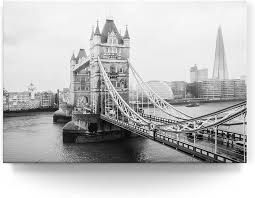London Bridge: A Historic Icon of London

Introduction: The Importance of London Bridge
London Bridge is not just a crucial thoroughfare spanning the River Thames; it is a symbol of the city’s rich heritage and a testament to its architectural evolution. Connecting the bustling boroughs of London, it stands as a vital link in the city’s transport infrastructure, serving millions of pedestrians and traffic daily. The bridge has witnessed landmark events in British history, making it a topic of great relevance for both locals and tourists alike.
Historic Significance
Situated in Central London, the current version of London Bridge was opened in 1973, replacing a 19th-century stone bridge. However, the history of bridges at this location dates back to Roman times, with the first wooden bridge built around AD 50. Throughout the centuries, London Bridge has served as a site of commerce, transportation, and even execution, marking its place in London’s tumultuous past.
In 1209, the first stone bridge was constructed by Peter of Colechurch and was adorned with houses, shops, and even a chapel. This medieval bridge lasted for over 600 years, becoming a central feature in the landscape of London. The famous phrase “London Bridge is falling down” originated during this time, referring to the numerous repairs and renovations it required over the century.
Recent Developments
In the 21st century, London Bridge continues to play an integral part in London’s transport network. The bridge connects London Bridge Station—one of the busiest railway stations in the city—to Southwark, allowing easy access to various parts of London and beyond. The ongoing development in the area, including the renovation of the London Bridge Station, aims to enhance passenger experiences and accommodate the growing demands of urban transport.
The area surrounding London Bridge has also seen significant transformation, with new skyscrapers and residential complexes sprouting around it, such as The Shard, which opened in 2012. This architectural marvel, standing at 310 metres, has become a new symbol of London, offering panoramic views of the city and further solidifying London Bridge’s importance.
Conclusion: A Landmark for the Future
As London continues to evolve, so does the relevance of London Bridge. It remains a testament to the endurance of the city’s infrastructure and its historical significance. With future plans for development and conservation, London Bridge is poised to maintain its status as a vital link not only for transport but as a cultural and historical landmark. For residents and visitors alike, London Bridge remains a fascinating destination worth exploring, reflecting the city’s enduring narrative and vibrant spirit.








